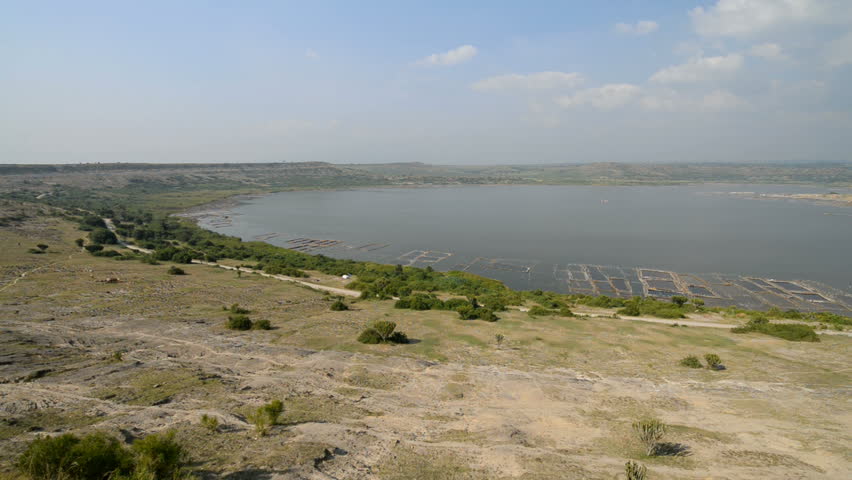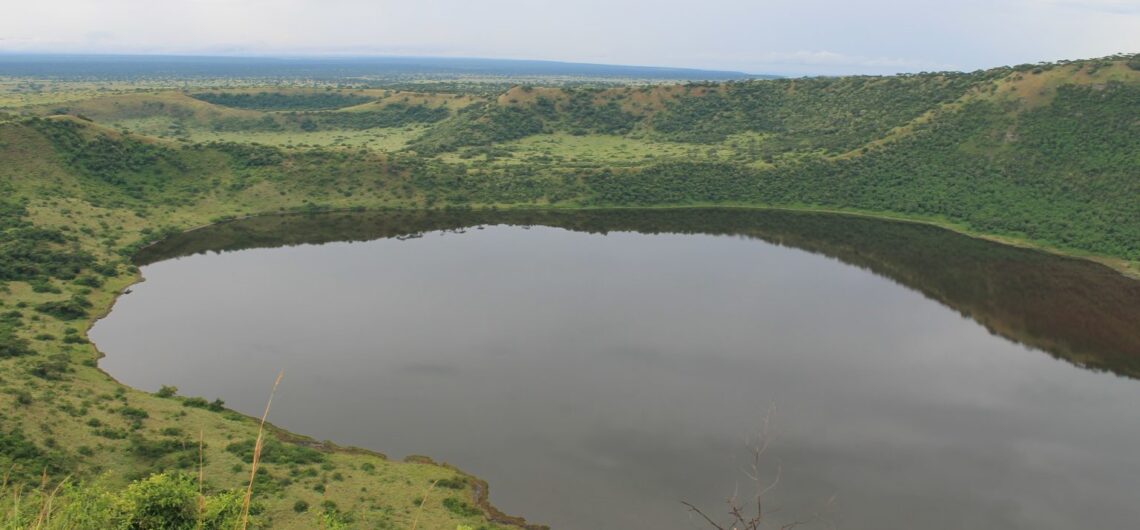Lake Katwe Craters in magnificent Queen Elizabeth park: The Lake Katwe Explosion Craters are a group of old volcano holes in Queen Elizabeth National Park in Uganda. They are in the southwestern part of the country, in Kasese District. Uganda has many of these crater lakes, especially in the west along the Albertine Rift Valley. The ones at Lake Katwe are the highest in Queen Elizabeth National Park. Even though they’re considered extinct, they still sometimes release a smelly gas, which is why some are called things like Nyamunuka, which means “smell” in the local language.
Lake Katwe Craters in Queen Elizabeth National park
Western Uganda has three main groups of these craters: Katwe Craters in Queen Elizabeth National Park, Bunyaruguru Craters near Kichwamba Escarpment, and the Ndali Kasenda Crater near Fort Portal and Kibale Forest National Park. Each group is special in its own way.
The Lake Katwe Craters in magnificent Queen Elizabeth park area mostly has old hard volcanic rocks and gentle hills with explosion craters. Some of these craters have water in them, while others are just grassy or forested. Lake Katwe itself is a salt mining lake that formed from a volcanic eruption about 10,000 years ago. The lake gets water from streams but does not have an outlet, so it is salty.
In the dry season, the water in Lake Katwe evaporates a lot, leaving behind very salty water. This makes it easy for local people to get salt from the lake. They take the rock salt from the main lake to a place where they dry it out before selling it. They use special trees called am-batch trees to float the salt to the drying area because it is the easiest way.
Lake Katwe Craters in Queen Elizabeth National park is the biggest salt seller in Uganda and gives jobs to many people who live nearby. They sell the salt to neighboring countries like Rwanda, Burundi, and the Democratic Republic of Congo. It is mainly used for treating animal hides and skins and for cooking. Ugandans also use some of the salt. Because the water in Lake Katwe is so salty, not many animals live there. However, you can still see flamingos and other water birds.

The area around Lake Katwe is not great for watching animals because there are lots of tall bushes and trees. However, it still offers nice views of the park. Sometimes, if you are lucky, you might see elephants, buffaloes, monkeys, or baboons. To get to Lake Katwe, you can do a special drive in Queen Elizabeth National Park. It starts from Kikolongo Queens Pavilion and follows the Queens track. You will see the impressive craters along the way, including the famous Kyemengo crater, before reaching Lake Katwe Craters in Queen Elizabeth National park, known for its saltpans that help the nearby community.
You should use a 4WD vehicle for this drive because the road can be rough, rocky, and slippery when it rains. It is best to do the drive when the weather is dry. If you are staying at Mweya Safari Lodge, you can access the salt Crater Lake directly. Otherwise, if you are staying outside the park, you can reach it via the Katwe-Kabatoro road.
Visiting Lake Katwe Craters in Queen Elizabeth National park lets you see how local people extract salt, which is their main source of income. You can also visit the old salt factory and learn about how salt forms from the very salty water during the dry season. However, working there is not easy and can cause health problems. Women use flour to protect themselves, and men use condoms to protect themselves because the water is toxic.Top of Form
People in Katwe village work hard because they rely on salt mining to make a living. You can support them by buying crafts from them. During the tour, visitors might see wild animals like lions, baboons, Uganda Kobs, elephants, and buffaloes near Nyamunuka Crater Lake.
For bird lovers, Munyanyange explosion Crater Lake is a great spot to see migratory birds such as flamingos, pelicans, plovers, stilts, and more. Bird watchers can add these birds to their list, especially if they are on a bird watching safari in Uganda.


Comments